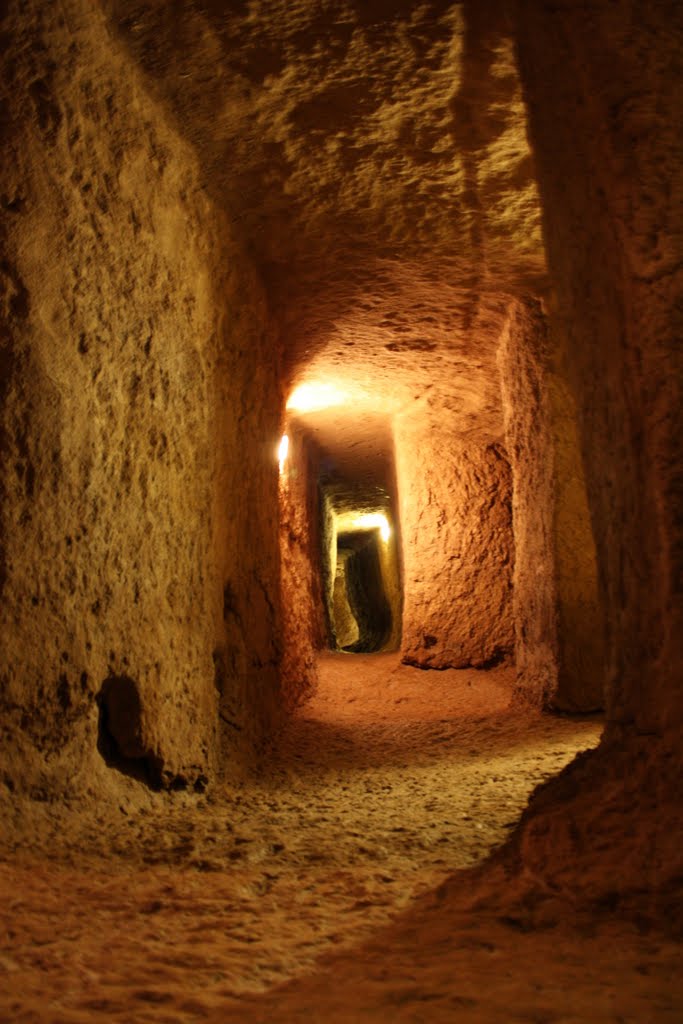The history of Iran is one of invasion after invasion. Features in Iranian culture are testaments to this turbulent past such as endurance in the face of adversity, malleability to adapt to new conditions and innovation to overcome challenges.
One becomes distinctly aware of these characteristics when walking through the awe inspiring corridors of the Noushabad underground city.
‘Ouyi’ underground structure, is a handmade complex, spreading thousands of square meters beneath the city of Noushabad, and consists of a labyrinth of corridors, with shafts descending down three stories.
Noushabad is located a mere 5 kilometers from Kashan, in Isfahan Province.
Ouyi was only discovered ten years ago in 2004. Archeologists believe the subterranean structure city dates back 1500 years to the pre-Islamic Sassanid era.
The city paints a vivid picture of a people under siege. The complex with all its innovative details and ingenuity was clearly constructed to allow a large number of people, perhaps the entire town, to hide from enemy forces over a sustained period of time.
Trapping Intruders
The most striking of features is the sophisticated air conditioning system, which keeps the three floors cool and ventilated.
Other impressive aspects include the manner in which the corridors have been carved at an angle for defensive purposes. If an enemy was to appear at any of the entrances, the angle would prevent them from being able to see down the corridor, thus allowing the inhabitants’ time to escape or to ambush the enemy. The entire three storey structure has been built at an upwards slant, again designed to delay enemy advance and prevent them from getting to the upper levels. Man-holes, optical illusions, obstacles, forked paths were all strategically worked into the city’s design to trap and trick intruders.
A lot of thought appears to have gone into the design to make it inhabitable. Aside from ventilation, there are small grooves in the walls for fat burning lamps used for lighting; there are latrines on each floor with waste water channels running underneath; there are wells with fresh water and kitchen areas, storage spaces and bedrooms are easily discernible.
There were several different openings to reach the underground city; some located inside residential buildings and others in important places of congregation such as the main fort, just outside the city.
Today two entrances have been created at the bottom of a 16-18th Century Safavid water reservoir allowing visitors to reach the underground city.


